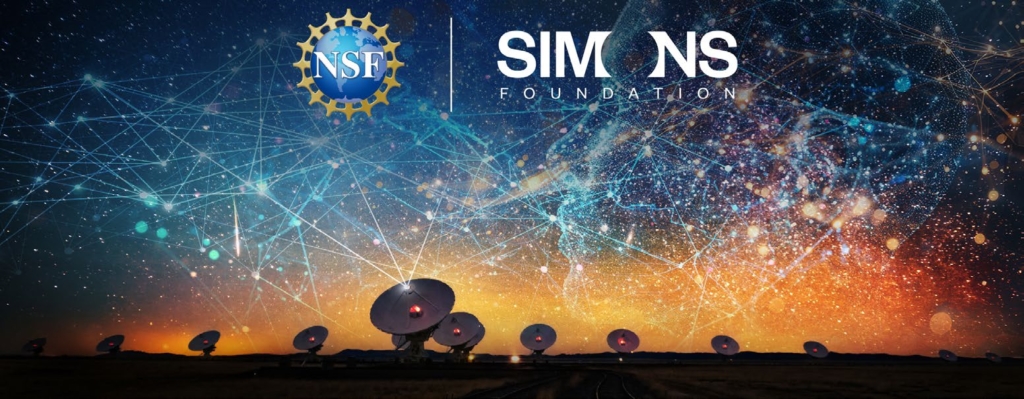A team of astronomers has made a surprising discovery using the U.S. National Science Foundation Green Bank Telescope (NSF GBT): eleven fast-moving clouds of cold, neutral hydrogen gas—akin to “ice cubes”—surviving deep inside the Fermi Bubbles.
Recent News
ALMA Reveals Stunning Details of Infant Galaxies in the Early Universe
The [CII] Resolved ISM in STar-forming galaxies with ALMA (CRISTAL survey) peered back to when the Universe was only about one billion years old – a mere toddler in cosmic terms. These observations are helping scientists understand how galaxies formed and evolved from primordial gas clouds into the organized structures we see today.
NSF NRAO Leads Critical Spectrum Studies to Safeguard Radio Astronomy
The U.S. National Science Foundation National Radio Astronomy Observatory (NSF NRAO) has received funding to expand its study of an invisible—and crucial—scientific and technological resource: the radio spectrum.
AI Meets the Cosmos: Astronomers’ Ambitious Plan to Tackle Astronomical Big Data

Credit: Photo by Bettymaya Foott/NSF NRAO/AUI, composition by U.S. National Science Foundation.
The U.S. National Science Foundation National Radio Astronomy Observatory spearheads initiative to develop cutting-edge tools for processing vast celestial datasets
Astronomers collect almost unbelievable amounts of data when they observe the Universe with telescopes. Some research collects petabytes of data a day, the equivalent of 500 billion pages of standard printed text. As the next generation of telescopes get bigger, more sensitive, and faster, how will astronomers process all this information, to find a needle in a haystack, their latest scientific discovery?
The U.S. National Science Foundation National Radio Astronomy Observatory (NSF NRAO) is working with scientific, academic, and industry partners across the country to find solutions, as part of the NSF-Simons AI Institute for Cosmic Origins (NSF-Simons CosmicAI), a five-year program made possible by funding from the NSF and the Simons Foundation.
“The goals of the Cosmic AI Institute are to accelerate astronomical research — and democratize access to it — by developing new, AI powered tools to process the vast amounts of data next generation telescopes will create,” shares Brian Mason, an NSF NRAO scientist who is a part of the team. These include several NSF NRAO instruments, like the Next Generation Very Large Array, and upgrades to the Atacama Large Millimeter/submillimeter Array, of which the NSF NRAO is a partner.
The NSF NRAO will be focusing on developing tools that dramatically increase the efficiency of processing radio astronomical datasets. This work will be done in collaboration with the Institute colleagues at the School of Computing at the University of Utah.
The NSF NRAO wants to involve scientists at all career levels in this project, especially those early in their career, and recently released two opportunities for postdoctoral fellowships, with applications open until November 15th. “The Institute fellows will play a leading role in our research focus of developing novel, AI-powered tools to streamline the calibration and imaging of radio astronomical datasets from ALMA and other NSF NRAO telescopes,” explains Mason. Specifically, fellows will assist in developing a methodology and toolset to distinguish good calibrations from problematic calibrations that currently require human evaluation to expedite high-volume, high-throughput calibration and imaging; and developing robust, automated data segmentation for spatio-kinematic regions of interest in hyperspectral image cubes and leveraging to improve the efficiency of creating compact science-ready data products in imaging pipelines.
Collaboration is crucial for ambitious, large scale projects such as this, among the many partners involved, and other peers in the field. The institute includes co-Institutes and collaborators at half a dozen institutions, including the University of Texas, the NSF NOIRLab, the Texas Advanced Computing Center, the University of Utah, the University of Virginia, and UCLA. Adds Mason, “We’re excited that several faculty of the University of Virginia Astronomy department are Institute members. We’re also excited to be building new connections with the School of Data Science.”
The NSF-Simons Cosmic AI Institute promises a significant leap forward in the technology used in the field of astronomy, harnessing the power of artificial intelligence to manage and interpret the staggering volumes of data generated by next-generation telescopes. By fostering collaboration among leading institutions and engaging early-career scientists through fellowship opportunities, the NSF NRAO is not only accelerating research but building capacity to develop and deploy these critical technologies in the Observatory and the wider astronomical community.
About NRAO
The NRAO is a facility of the U.S. National Science Foundation, operated under cooperative agreement by Associated Universities, Inc.
This news article was originally published on the NRAO website on October 21, 2024.
Recent News
Galactic Mystery: How “Ice Cubes” Survive in the Milky Way’s Blazing Bubbles
A team of astronomers has made a surprising discovery using the U.S. National Science Foundation Green Bank Telescope (NSF GBT): eleven fast-moving clouds of cold, neutral hydrogen gas—akin to “ice cubes”—surviving deep inside the Fermi Bubbles.
ALMA Reveals Stunning Details of Infant Galaxies in the Early Universe
The [CII] Resolved ISM in STar-forming galaxies with ALMA (CRISTAL survey) peered back to when the Universe was only about one billion years old – a mere toddler in cosmic terms. These observations are helping scientists understand how galaxies formed and evolved from primordial gas clouds into the organized structures we see today.
NSF NRAO Leads Critical Spectrum Studies to Safeguard Radio Astronomy
The U.S. National Science Foundation National Radio Astronomy Observatory (NSF NRAO) has received funding to expand its study of an invisible—and crucial—scientific and technological resource: the radio spectrum.
